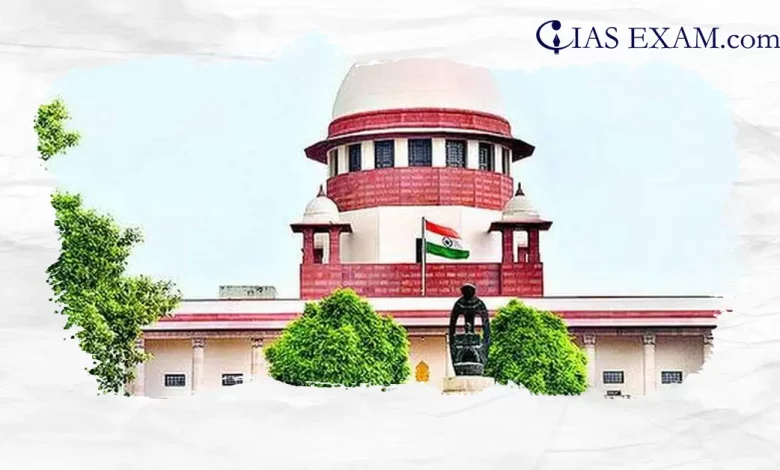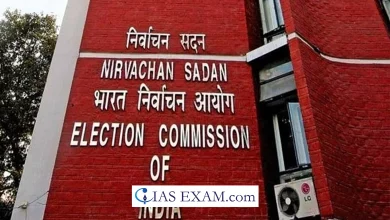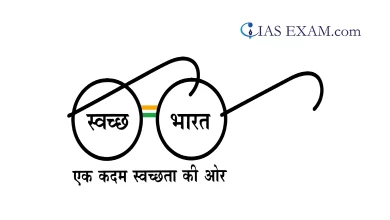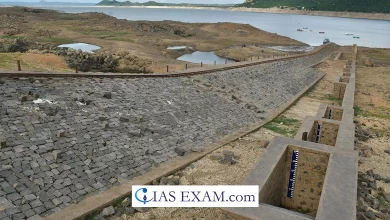Need for Regional Benches of Supreme Court
GS Paper 2 - Indian Constitution, Judiciary, Constitutional Bodies

Context
The Parliamentary Standing Committee on Personal, Public Grievances, Law and Justice recently conveyed to the Lok Sabha that the Law Ministry has endorsed its proposal to establish regional benches of the Supreme Court throughout India. However, the Supreme Court has consistently dismissed the notion, noting that the matter is currently sub judice.
As the highest court, the SC plays a critical role in interpreting laws, resolving disputes, and setting legal precedents. However, the question of whether India should establish regional benches of the Supreme Court has been a subject of considerable debate and scrutiny.
Differing Legal Positions on the Issue
- Article 130 of the Indian Constitution: It says that the Supreme Court shall sit in Delhi or in such other place or places, as the Chief Justice of India(CJI) may, with the approval of the President, from time to time, appoint.
- Law Commission Report: As a step towards making the Court more accessible, the 229th Law Commission Report (2009) recommended four regional benches to be located in Delhi, Chennai or Hyderabad, Kolkata, and Mumbai to hear non-constitutional issues.
- Bar Councils: In July 2021, Bar Councils in the south submitted a representation to the Chief Justice of India seeking that a Supreme Court bench be set up in south India.
- Parliament Standing Committee Report: The Parliament Standing Committee on Personnel, Public Grievances, Law and Justice presented its 107th report on ‘Demands for Grant (2021-22) of the Ministry of Law and Justice’ and batted for the establishment of the regional benches of the Supreme Court as suggested in the 229th report of the Law Commission.
Advocates for Regional Benches
- Proponents of establishing regional benches of the Supreme Court argue for greater accessibility to justice and judicial efficiency. India is a vast and diverse nation, with citizens from various regions facing unique legal challenges and issues.
- By decentralizing the judicial process, regional benches can bring justice closer to the people, reducing the burden of travel and expenses associated with pursuing legal remedies in distant locations.
- Moreover, regional benches can enhance representation and inclusivity in the judicial system. They can cater to the linguistic and cultural diversity of different regions, ensuring that litigants feel heard and understood in their native languages and contexts. This can foster greater trust and confidence in the judiciary among marginalized communities and remote areas.
- Additionally, proponents contend that regional benches can alleviate the backlog of cases that burden the Supreme Court. Concentration of cases in the apex court often leads to delays in dispensing justice, causing frustration and disillusionment among litigants.
- By decentralizing the workload, regional benches can expedite the resolution of cases and promote timely delivery of justice.
Alternative Solutions
Instead of establishing separate regional benches of the Supreme Court, alternative solutions merit exploration:
- The Tenth Law Commission of India proposed that the Supreme Court be split into two divisions: the Constitutional Division and the Legal Division. Only issues about constitutional law would be brought to the proposed Constitutional Division.
- Strengthening the infrastructure and capacity of existing high courts across the country can enhance their ability to handle a greater volume of cases and provide speedy justice to litigants.
- Empowering high courts with specialized benches or circuits dedicated to specific regions or types of cases can address the need for regional representation and accessibility without diluting the authority of the Supreme Court.
- The Supreme Court said in Bihar Legal Support Society v. Chief Justice of India, 1986 that it was “desirable” to create a National Court of Appeal with the authority to hear cases involving special leaves. As a result, the Supreme Court would be limited to considering cases involving public law and the constitution.
- The Malimath Committee advised that, in light of the huge backlog of cases, the Supreme Court operates for 206 days and shortens its vacation time by 21 days.
- Make it a priority to update and reinforce the current legal system, which includes district and high courts, in order to decrease case backlogs and increase access to justice.
Way Forward
The question of whether India should have regional benches of the Supreme Court requires careful deliberation and consideration of various factors. While the establishment of regional benches holds the promise of greater accessibility, efficiency, and inclusivity in the judicial system, it also poses challenges related to uniformity, infrastructure, and judicial integrity. As India evolves and confronts new legal and social challenges, policymakers, legal experts, and stakeholders must engage in constructive dialogue to explore innovative approaches to enhance the delivery of justice while upholding the principles of the Constitution and the rule of law.
SOURCE: The Hindu





.png)



